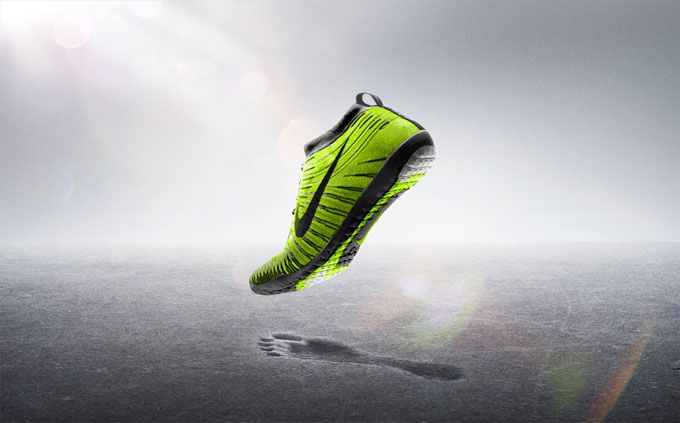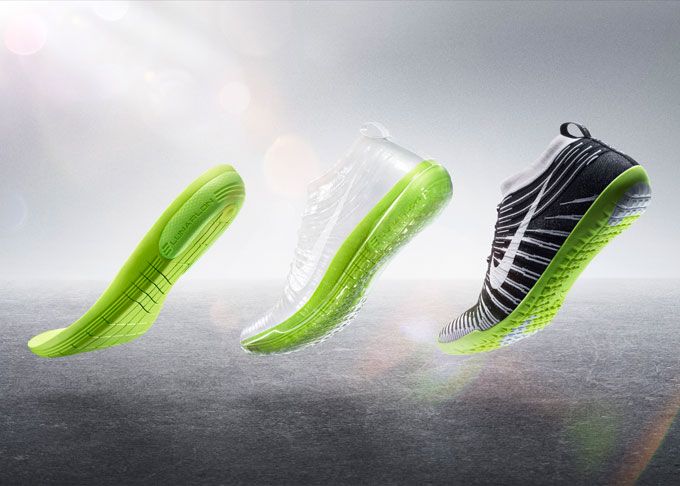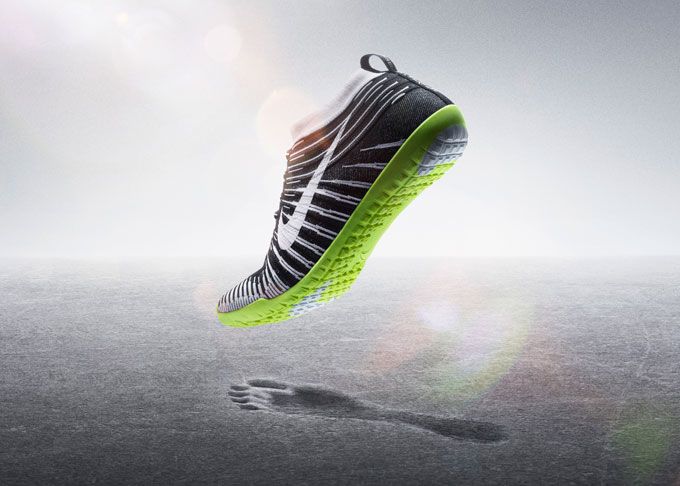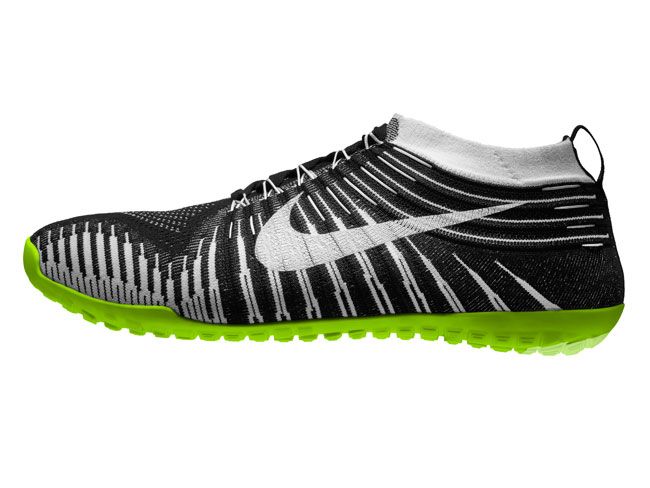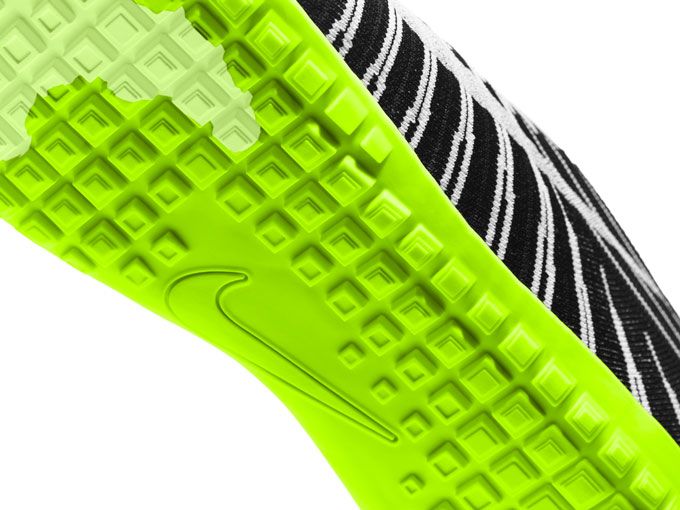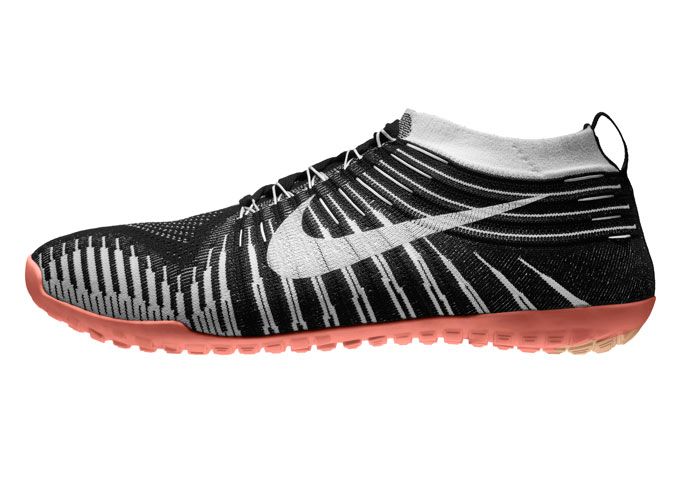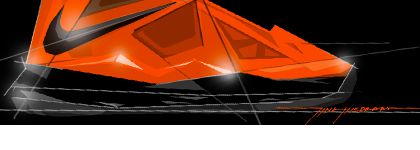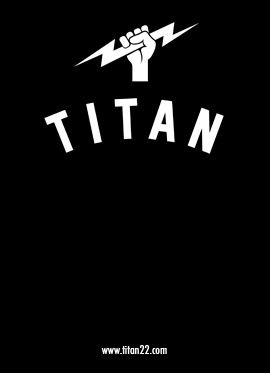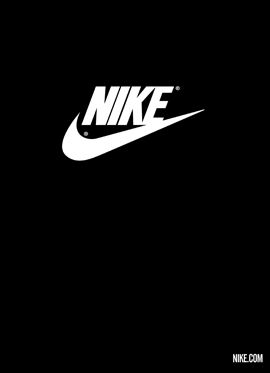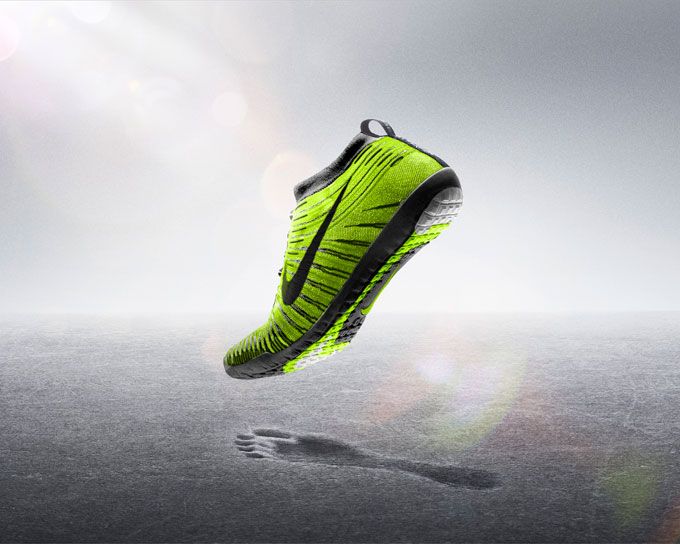
The Nike Free Hyperfeel is created to intuitively move with the foot.
It is inspired by Nike’s "Nature Amplified" design ethos — an
approach focused on the body in motion and fueled by scientific data and
athlete insights.
Research insights informed the precise placement of cushioning and
outsole traction for a low-profile shoe that provides padding and protection
only where necessary. A drop-in Lunarlon insole with flex grooves allows
the foot to have direct contact with the Lunarlon cushioning. The waffle
outsole is ultra-thin, allowing the foot to get closer to the ground.
Scientists in the Nike Sport
Research Lab carefully studied which areas of the foot come into
contact with the ground and absorb pressure, and which areas require traction.
They used pressure-mapping technology and high-speed film to analyze the foot
in motion.
The result is Nike Free Hyperfeel, a shoe that mimics the intricate
workings of the human foot: Lunarlon foam replicates cushioned pads under the
foot. The outsole protects like hardened skin on the sole. Dynamic Flywire
flexes and contracts, inspired by ligaments.
"Nike Free Hyperfeel has fewer total shoe parts and places the foot directly on top of responsive Lunarlon foam,” says Tony Bignell, VP of Nike Footwear Innovation. “The shoe acts as extension of the foot and delivers a natural motion sensation for the runner.”
OUTSOLE
Harking back to Nike co-founder and Oregon Track & Field coach
Bill Bowerman, the Nike Free Hyperfeel is structured on a waffle outsole that
is reengineered with strategically placed pistons, reflecting key pressure
points. Highly durable XDR rubber is added in high-wear heel areas.
CUSHIONING
Articulated Lunarlon foam mirrors the flexible, knife-cut cushioning
used in Nike Free footwear, but here it is the only intermediary layer between
foot and outsole — minimal layers for maximum sensation. (An optional sockliner
is included for a personalized fit.)
FIT AND SUPPORT
Nike Flyknit in the upper provides a compression fit and support where
needed without unnecessary structure or weight. Nike Flywire cables lend
additional support to help lock the foot down. The upper’s seamless
construction significantly reduces the number of shoe components: A typical Air
Pegasus running shoe is made up of 57 components. The Nike Free Hyperfeel has
just seven. By knitting a one-piece upper, Nike Flyknit construction
reduces Nike's typical upper waste by an average of 90 percent.
The Nike Free Hyperfeel ($175) will be at retail in the U.S., U.K. and
Japan beginning Sept. 5. It can be pre-ordered at nike.com/hyperfeel.
